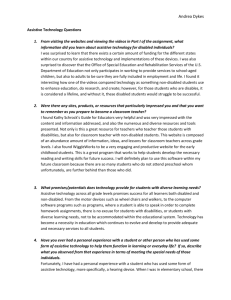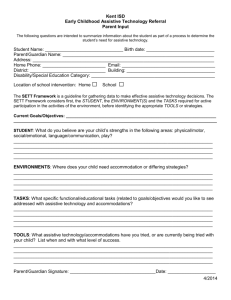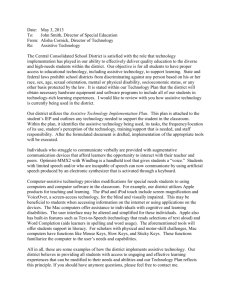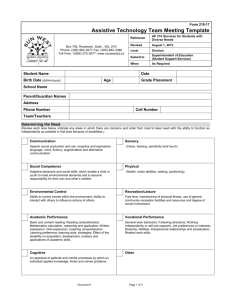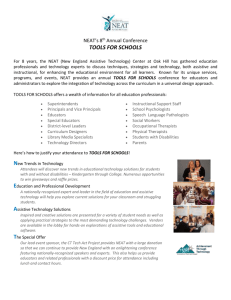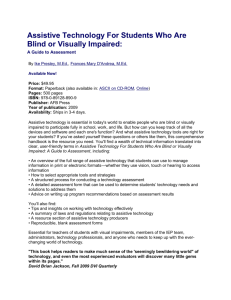assistive technology
advertisement
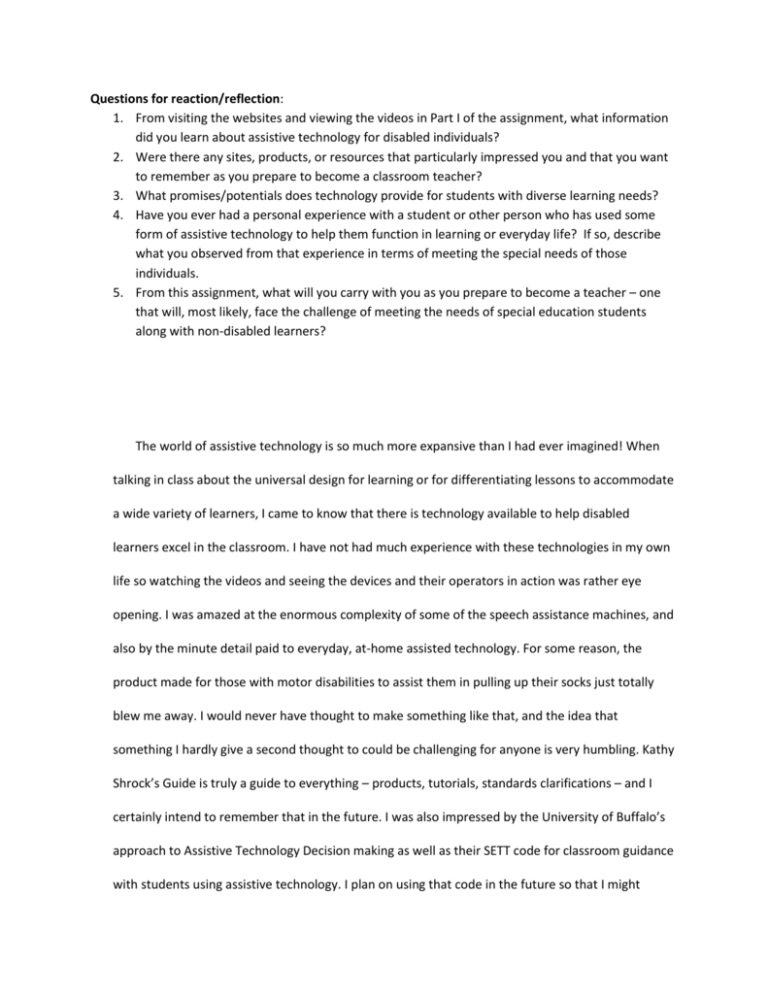
Questions for reaction/reflection: 1. From visiting the websites and viewing the videos in Part I of the assignment, what information did you learn about assistive technology for disabled individuals? 2. Were there any sites, products, or resources that particularly impressed you and that you want to remember as you prepare to become a classroom teacher? 3. What promises/potentials does technology provide for students with diverse learning needs? 4. Have you ever had a personal experience with a student or other person who has used some form of assistive technology to help them function in learning or everyday life? If so, describe what you observed from that experience in terms of meeting the special needs of those individuals. 5. From this assignment, what will you carry with you as you prepare to become a teacher – one that will, most likely, face the challenge of meeting the needs of special education students along with non-disabled learners? The world of assistive technology is so much more expansive than I had ever imagined! When talking in class about the universal design for learning or for differentiating lessons to accommodate a wide variety of learners, I came to know that there is technology available to help disabled learners excel in the classroom. I have not had much experience with these technologies in my own life so watching the videos and seeing the devices and their operators in action was rather eye opening. I was amazed at the enormous complexity of some of the speech assistance machines, and also by the minute detail paid to everyday, at-home assisted technology. For some reason, the product made for those with motor disabilities to assist them in pulling up their socks just totally blew me away. I would never have thought to make something like that, and the idea that something I hardly give a second thought to could be challenging for anyone is very humbling. Kathy Shrock’s Guide is truly a guide to everything – products, tutorials, standards clarifications – and I certainly intend to remember that in the future. I was also impressed by the University of Buffalo’s approach to Assistive Technology Decision making as well as their SETT code for classroom guidance with students using assistive technology. I plan on using that code in the future so that I might analyze the Student, the Environment, the Task, and the Technology while developing plans and methods in the classroom. I also realize now that I will most likely be faced with the prospect of ensuring the forward achievement of differently abled students in my classroom and thus will be responsible for continually educating myself on the mechanisms of such technologies. As I said, I have zero experience with these technologies in any firsthand kind of way, so I will be starting from scratch, but using resources like Kathy Shrock or even YouTube for video tutorials will help me become well acquainted in the future. I think it is also crucial that non-disabled learners familiarize themselves to some degree with their classmates’ assistive technologies. Students of all varieties love working with technology and taking away the air of “otherness” regarding these assistive technologies engages the entire classroom with them and further enriches every student’s ability to navigate the world of technology.
